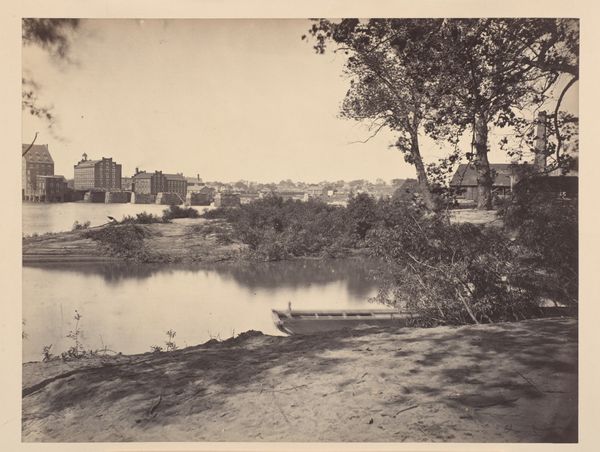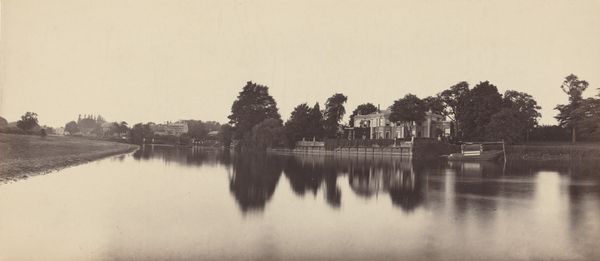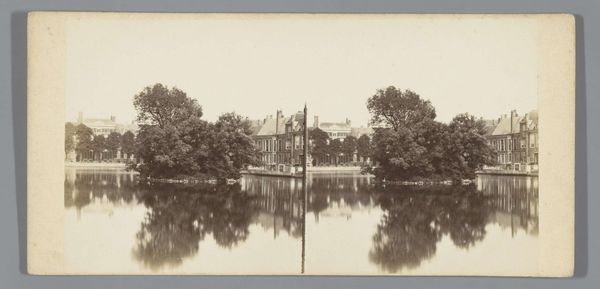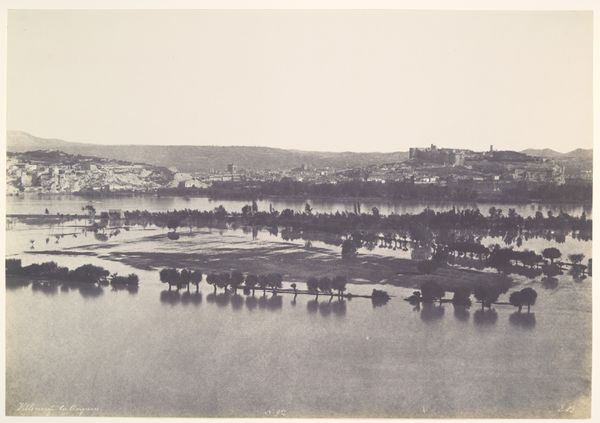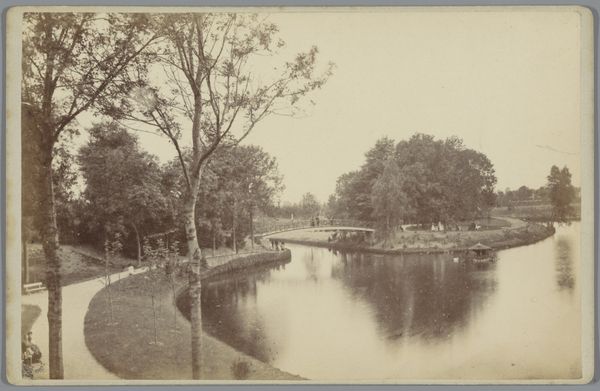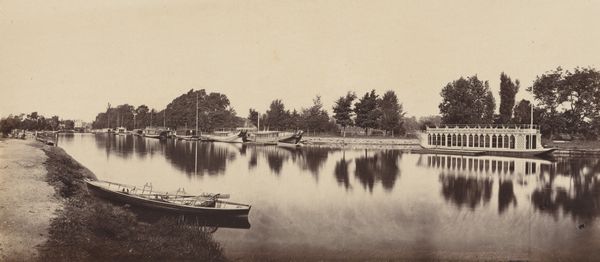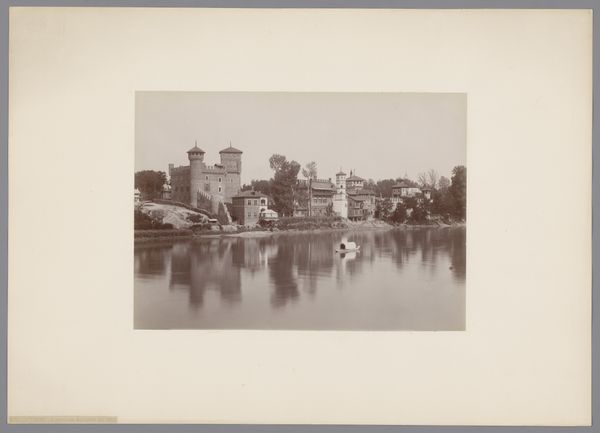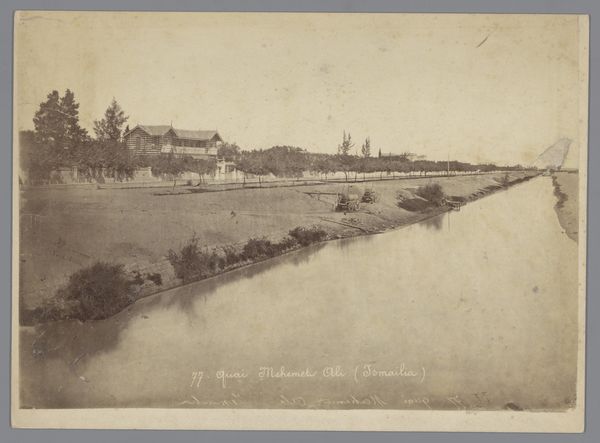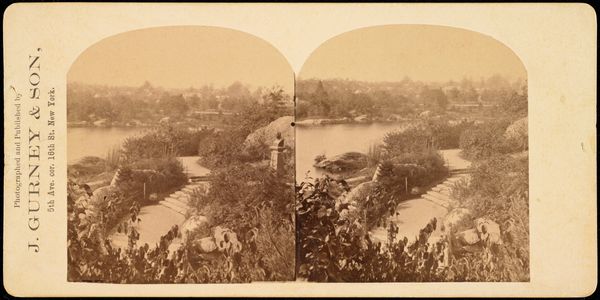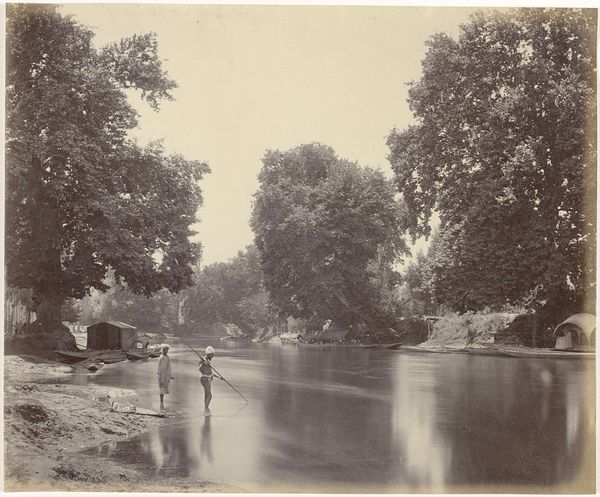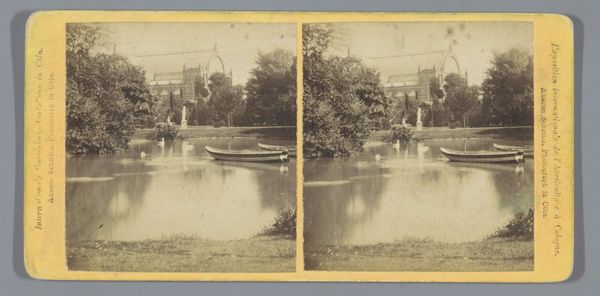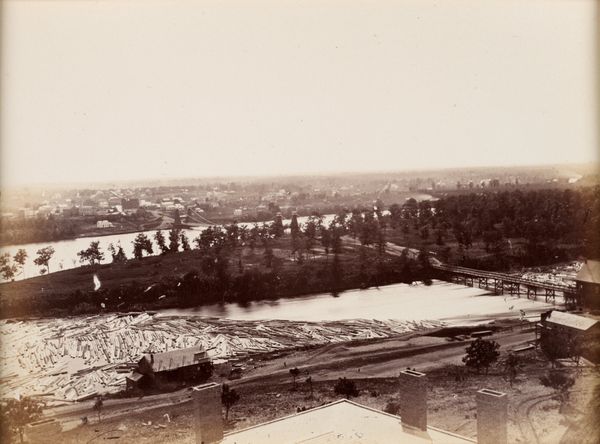![[Civil War View] by Thomas C. Roche](/_next/image?url=https%3A%2F%2Fd2w8kbdekdi1gv.cloudfront.net%2FeyJidWNrZXQiOiAiYXJ0ZXJhLWltYWdlcy1idWNrZXQiLCAia2V5IjogImFydHdvcmtzL2JiYjY2NDZhLTQ3ODItNDgxZC04NWRjLWY3YjJjNWJhODA3My9iYmI2NjQ2YS00NzgyLTQ4MWQtODVkYy1mN2IyYzViYTgwNzNfZnVsbC5qcGciLCAiZWRpdHMiOiB7InJlc2l6ZSI6IHsid2lkdGgiOiAxOTIwLCAiaGVpZ2h0IjogMTkyMCwgImZpdCI6ICJpbnNpZGUifX19&w=3840&q=75)
#
photo restoration
#
countryside
#
wedding photography
#
war
#
river
#
couple photography
#
wedding around the world
#
old-timey
#
19th century
#
watercolour illustration
#
celebration photography
#
natural palette
Copyright: Public Domain
Curator: What a still and evocative image. This is a photograph titled "[Civil War View]" from the 1860s, attributed to Thomas C. Roche. It's currently held at the Metropolitan Museum of Art. Editor: Yes, it’s quite serene in a way. The reflections in the water are almost mirror-like. What's left of that bridge and that lone figure on the bank create such a powerful image of loss. Curator: The scene captures a ruined bridge spanning a river, a solitary figure stands amidst the debris. What interests me most is understanding what its making reveals about the industry surrounding Civil War documentation. The material limitations, the slow photographic processes of the time... all dictated the subject matter and its visual rhetoric. Editor: Precisely! The socio-political climate demanded images that could shape public perception of the war. Photography during this era was often used as a tool to document destruction, of course, but it could also convey narratives of resilience or the consequences of conflict—or influence opinion. I think this photographer uses the river here as a divider. Curator: Indeed. And how were these photographs consumed? As carte de visite? Did their materiality change based on distribution? Were they displayed in parlors, pinned to walls, folded into letters home, informing both the emotional economy of families, but also providing material resources that would impact their socioeconomic realities at the time? These objects acted as tools of war in themselves, really. Editor: Absolutely, these images circulated widely, contributing to the collective memory and trauma of the war. The inclusion of that solitary figure adds an element of human scale to the devastation. But to come back to materials, those chemicals, the paper...the distribution network, that itself speaks to how important and industrialized art and documentation were. Curator: Exactly! Think about the resources and labor invested. Everything down to the logistics of transporting the glass plates themselves across a war zone! This photographer and countless others directly supported the Union, through materials, travel and labor. That bridge would certainly require specialized infrastructure. Editor: It truly adds another layer to how we perceive the impact of the Civil War. A material echo of loss and disruption, rendered permanent through photography. I can see the damage to the landscape reflecting more profound damage, socially. Curator: And to remember that what might at first appear picturesque in it's monochrome palette really embodies labor, extraction, consumption, distribution...it underscores how embedded images are with social, cultural, and political concerns. Editor: A sober reminder, indeed, of the enduring legacy of war, made tangible through art and material reality.
Comments
No comments
Be the first to comment and join the conversation on the ultimate creative platform.
